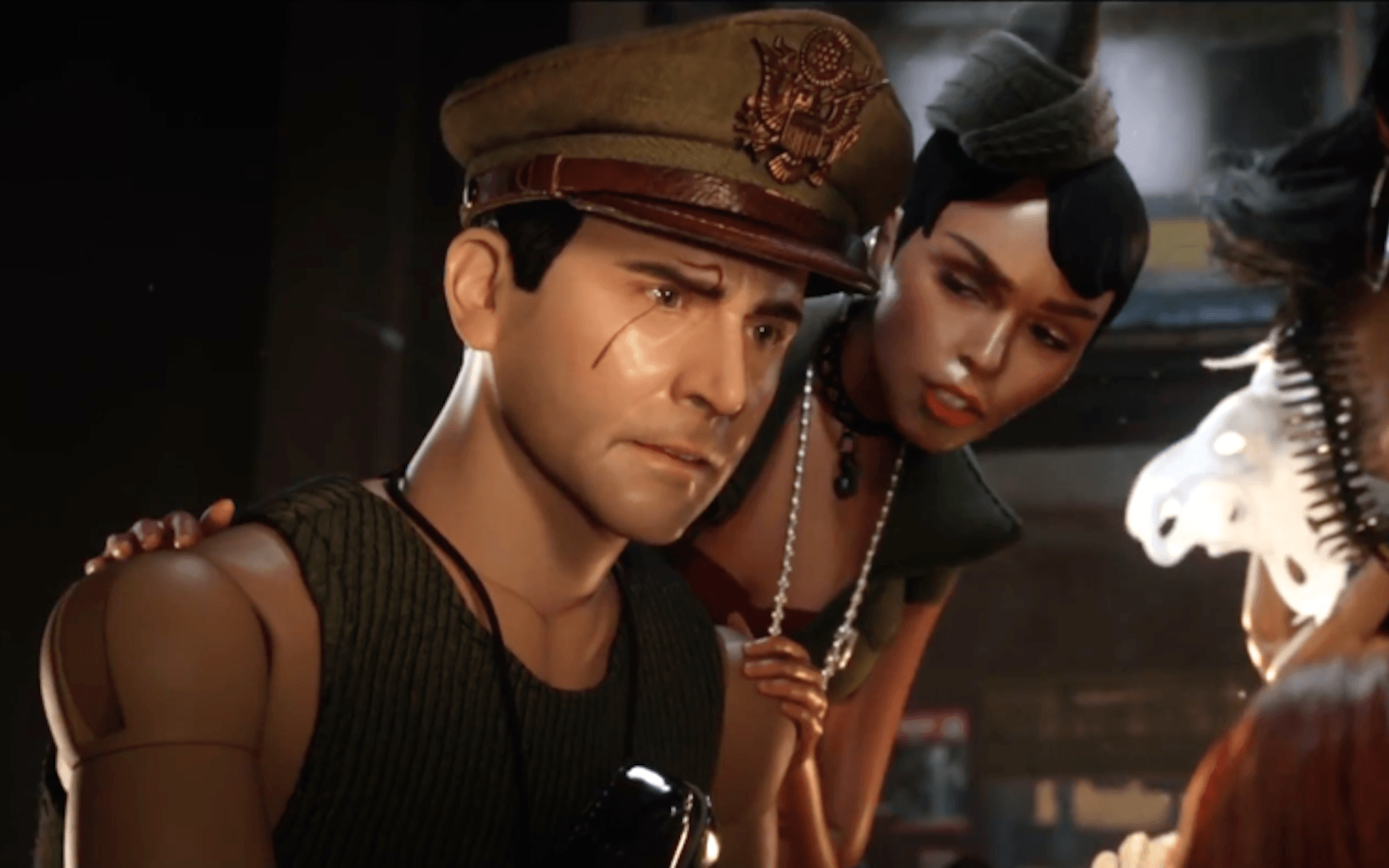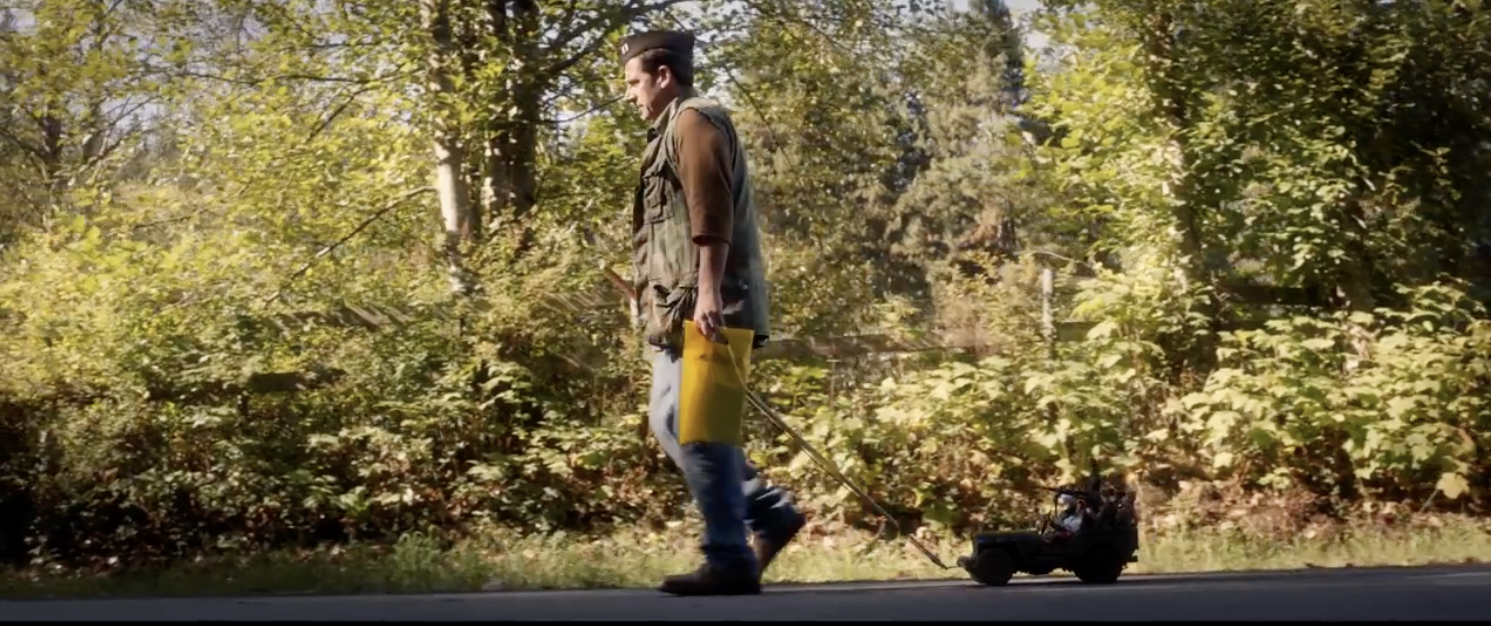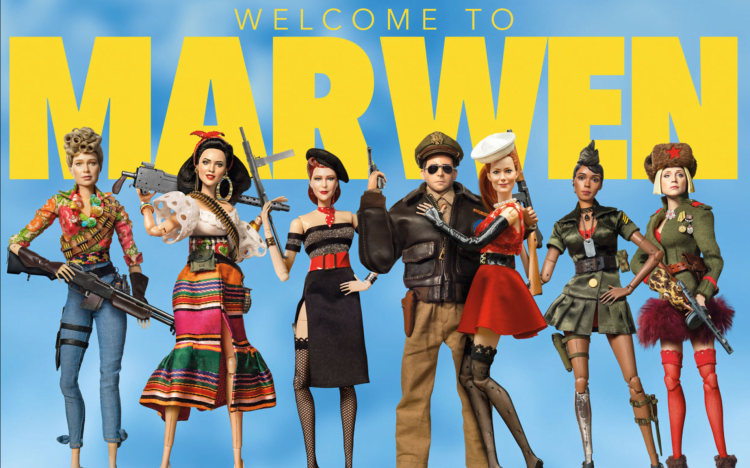“Welcome to Marwen” is a challenging film to not only categorize, but also to describe. It’s definitely not a film that fits in a standard “box” – you can’t just say, “oh, it’s an action film,” or “it’s a film about mental health issues,” or “it’s a CGI fantasy tale,” because none of those descriptions, while all partially accurate, don’t paint even close to an accurate picture about what you get when you watch this film.
First, some background on the tale: the movie is based on a true story, as outlined in the recent documentary “Marwencol.” It revolves around Mark Hogancamp (portrayed in “Welcome to Marwen” by Steve Carell), who was the victim of a brutal attack in his hometown in upstate New York. Afterward, Mark is so mentally and emotionally scarred that his mind blocks almost all memories of his life before the attack, and he is physically left unable to continue to function in his career as an illustrator. To help keep himself busy and for therapeutic reasons, Mark spends his time photographing a collection of dolls that inhabit a World War II-era Belgian village that he has build in his yard, which he calls Marwen. The still-life denizens are (almost) all based on people that Mark knows, including himself, his physical therapist, his caseworker, and other females he routinely interacts with around town.
“Welcome to Marwen” adheres fairly closely to the tale as outlined by the documentary, with the added cinematic benefit of being able to vividly bring to life the “action” that the Marwen dolls engage in via the real-life Hogancamp’s photography series. This is where the more “fantastical” elements of the film are presented, as “Colonel Hoagie” and the Ladies of Marwen are constantly fighting Nazis, getting themselves in and out of predicaments, and generally partying the nights away together. While there are some sexual/romantic overtones between the doll version of Mark and the female dolls, it’s never presented as overtly lewd or obscene; in one particularly funny moment, Mark’s friend Roberta (Merritt Wever) stops by his house during a “photo shoot” where Nazis have ripped her doll’s shirt off; exasperated but not surprised or angry, Roberta calmly asks Mark, “Why is my shirt open again?”

Things start to change, both in Marwen and in Mark’s real life, with the arrival of a new neighbor across the street, Nicol (Leslie Mann), who strikes up a friendship with Mark. She is quickly added to the group of Women of Marwen, and Hoagie’s adventures start to take a different turn with her presence. This sequence of events also coincides closely with the sentencing of Mark’s attackers, an obviously traumatic point in his current life, as he is asked to be present and make a statement at the sentencing. As the action comes to a frenetic head in Marwen, things there start to mirror Mark’s feelings in real life a bit more closely, and the film finishes on an incredibly strong and empowering note.
Carell has funny moments in this film, but this performance is a far cry from the goofy characters of “The Office” or “The 40-Year-Old Virgin” that audiences best know him for. Speaking of “The 40-Year-Old Virgin,” Carell and Mann get to reconnect in “Welcome to Marwen” after sharing memorable scenes together in the former – and they’ve come a long way. Not to say that the other performance is bad in any stretch of the imagination, but these are two very different films, and “Welcome to Marwen” truly allows both of them to show their acting skills and really deliver on crafting a story that the viewer truly falls into.
The rest of the supporting cast is excellent as well: other Marwen residents include Caralala (Eiza Gonzalez), a co-worker of Mark’s at the bar he cleans; Julie (Janelle Monae), who was Mark’s physical therapist post-attack; Anna (Gwendolyn Christie), Mark’s monthly caretaker; Suzette (Leslie Zemeckis), Mark’s favorite actress from the, uh, “adult film industry;” and Deja Thoris (Diane Kruger), who plays the only doll that is not based on a person from Mark’s life, but is definitely anchored by another facet in his daily routine. Of particular note is Christie for a small and woefully-underused but memorable standout performance as the Russian caretaker who has much more screen-time in her one “real life” scene than in all the Marwen scenes combined.

Robert Zemeckis directed the film, and his passion for the subject matter shines through brightly. The attack and subsequent mental and physical injuries are never played on-screen for empathy or highlighted so sympathetically that they derail the narrative of the story – which is an incredibly hard line to toe with these types of subject matters. The Marwen action sequences are simply a delight, and Zemeckis fans will likely squeal with excitement at the addition of one particularly cinematic vehicle towards the conclusion of the story.
Due to the sensitive nature of the subject matter, however, the film definitely is not easily categorized. People hoping for an “action film” and wanting only to see the Marwen-specific sequences will likely not enjoy the real-life plot of the film; likewise, folks who come looking for the standard human-nature focused kind of movie may be a bit jarred and confused by the WWII-era action so roundly displayed in the Marwen sequences. Through it all, though, the feeling is permeated that “Welcome to Marwen” is a confident tale that works to blend multiple genres together in a way that no film has ever really attempted before. If you’re a viewer who can open your mind and freely experience a unique film that is equal parts moving, exciting, and sorrowful, then “Welcome to Marwen” should deliver as one of the most unique film-watching experiences of the year.

